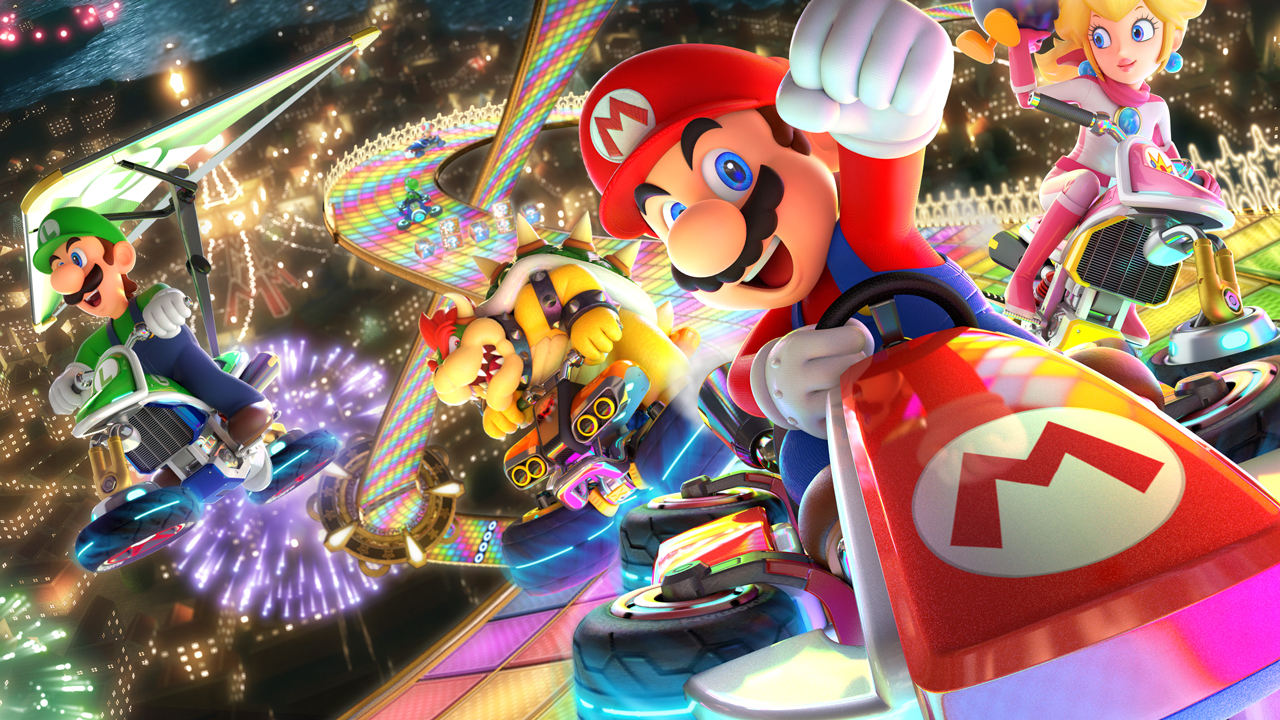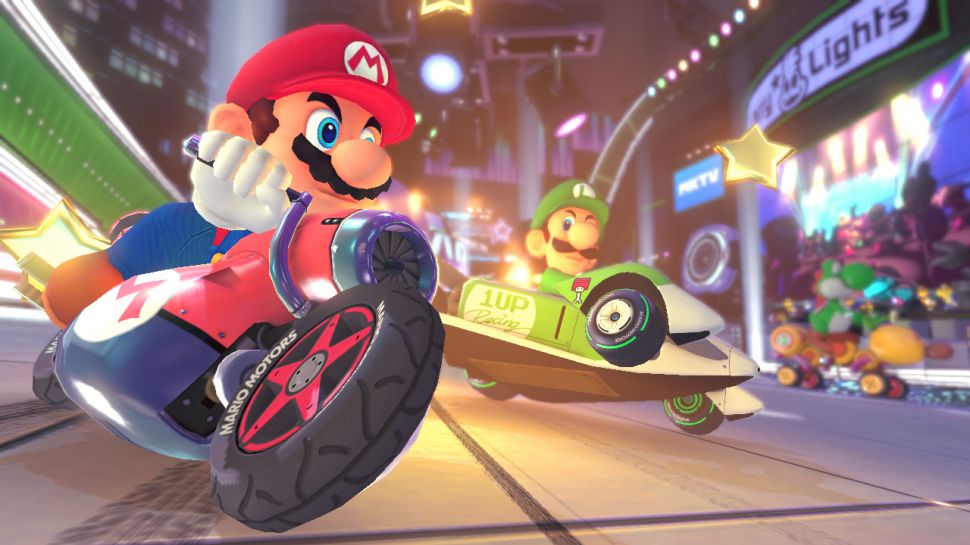GamesRadar+ Verdict
Three years on: still a classic, and with its biggest weakness fixed. If you own a Switch it’s a no-brainer – especially if it’s your first time.
Pros
- +
Proper battle arenas comfortably beat repurposed tracks
- +
Renegade Roundup is a brilliant new team-based mode
- +
Racing down Mount Wario on the bus will never get old
Cons
- -
Are we greedy for wanting at least one new GP?
- -
Blue shells: we know why they’re here; we still hate ‘em
- -
Online opponents picking Dry Dry Desert
Why you can trust GamesRadar+
Mario Kart 8 was a revelation, but not quite a revolution. Though its biggest new feature made a significant impact, underneath the bonnet purred the same finely-tuned engine. Anti-gravity racing was always more about spectacle than systems: a change for the better, undoubtedly, and a real treat for the eyes. Still, fundamentally, this was still the same Mario Kart we’d known and loved for 20+ years: part arcade racer, part dodgem ride. This wasn’t an attempt to change the formula but to perfect it.
Deluxe, then, makes absolute sense, as another chance to further refine a game that always wanted to be the acme of its genre rather than a paradigm shift for the arcade racer. It’s also, of course, an opportunity for Nintendo to find a wider audience beyond the relatively narrow reach of the Wii U player base. Though the original’s attach rate was phenomenal – roughly speaking, Nintendo shifted a copy of the game for every two hardware units – Switch should make the latest and greatest Mario Kart a bona fide smash, this time without the caveat “for a Wii U game”.
So what’s so deluxe about it, then? Well, for a start, it’s had an injection (ink-jection?) of extra colour from the Splatoon universe. Turf War map Urchin Underpass has been reworked into a battle arena, while a male and female Inkling can be found on the groaning character select screen. Two new ATVs are also available: the Splat Buggy warrants no further explanation, while the marginally lighter Inkstriker is basically a torpedo on wheels. You’d think it would look strange to see these fresh upstarts racing alongside the old stagers, but the character designs fit more snugly here than the previous crossovers (yes, Link, we’re looking at you).
Ready for the next battle
Meanwhile, it’s farewell to the old battle mode, the one area of the original that never seemed to have had the same affection lavished upon it as the rest. In repurposing eight Grand Prix circuits as battle maps, Nintendo confused many players, who approached it like a jousting tournament. Either way, encounters were often sporadic and unsatisfying: you’d find yourself bimbling about aimlessly, hoping to get a good item before spending ages looking for an opponent to use it on. Well, that’s gone. Mario Kart’s new battle mode is Mario Kart’s old battle mode: a return to battle arenas purpose-designed for weaponised chaos.
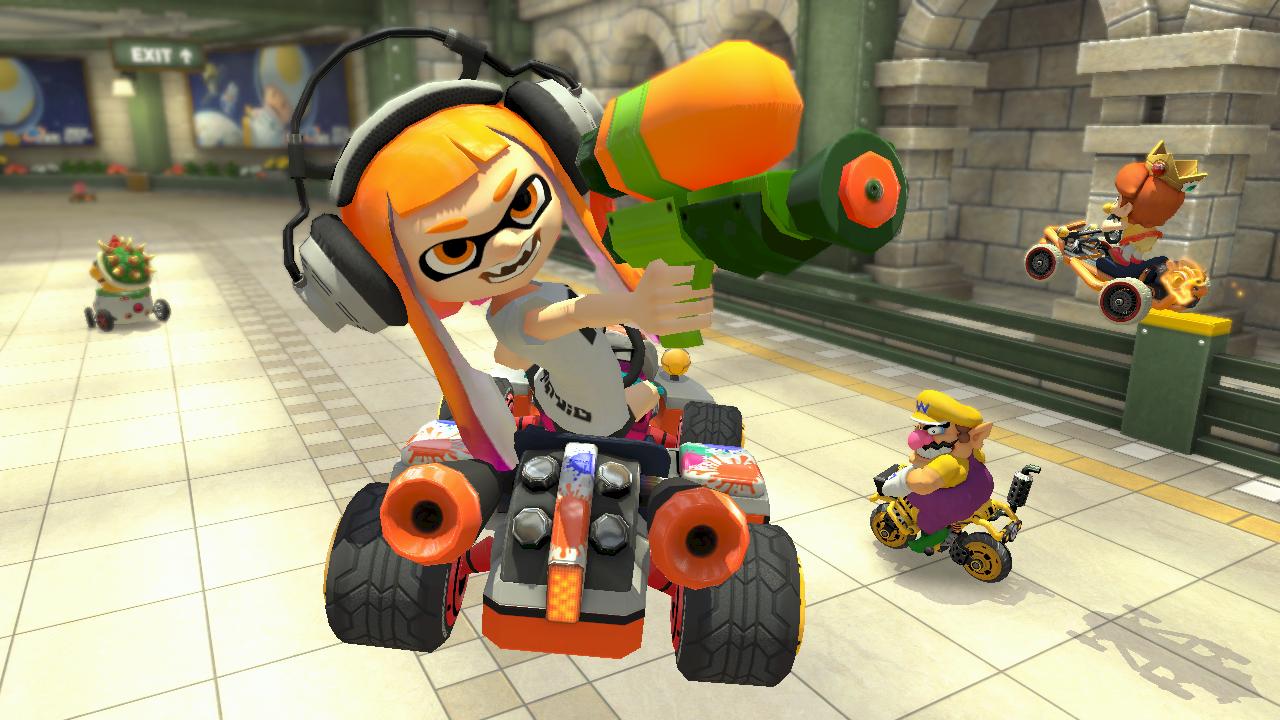
They’re good ones, too. Eight maps might seem a tad stingy, but the quality ranges from solid to excellent. They all feature open areas where mayhem reigns, and narrower passages where mayhem reigns slightly less frequently. There are few places to effectively hide, but plenty of potential routes away from danger, and several opportunities to surprise unsuspecting opponents. You can break through the doors of the large pagoda in Dragon Palace, or race up to the top floor and then drop in on a rival. The low-gravity Lunar Colony features craters which you can trick off or secrete bombs and bananas inside. And the calorific Sweet Sweet Kingdom might be a modern multiplayer classic: you can drive up, around or under its candy castle centrepiece, which also boasts a balcony ramp to leap off, and doughnut arches designed for drifting beneath. It more than compensates for its decidedly average Mushroom Cup counterpart.
"Mario Kart’s new battle mode is Mario Kart’s old battle mode: a return to battle arenas purpose-designed for weaponised chaos."
Of the three retro picks, it’s the oldest that stands out from the pack. SNES Battle Course 1 is notable for its low walls, with tiny ramps allowing skilled drivers to race across them. It’s also the perfect showcase for another golden oldie. The Feather is back, and it’s here that it comes into its own, as you hop over those walls to escape a certain shelling. Which isn’t to say you can’t deploy it elsewhere to equally gloat-worthy effect. There’s nothing quite like stealing a Shine Sprite from a hapless rival with a perfectly-timed hop – especially when they were two seconds away from winning the round. (Sorry, son.)
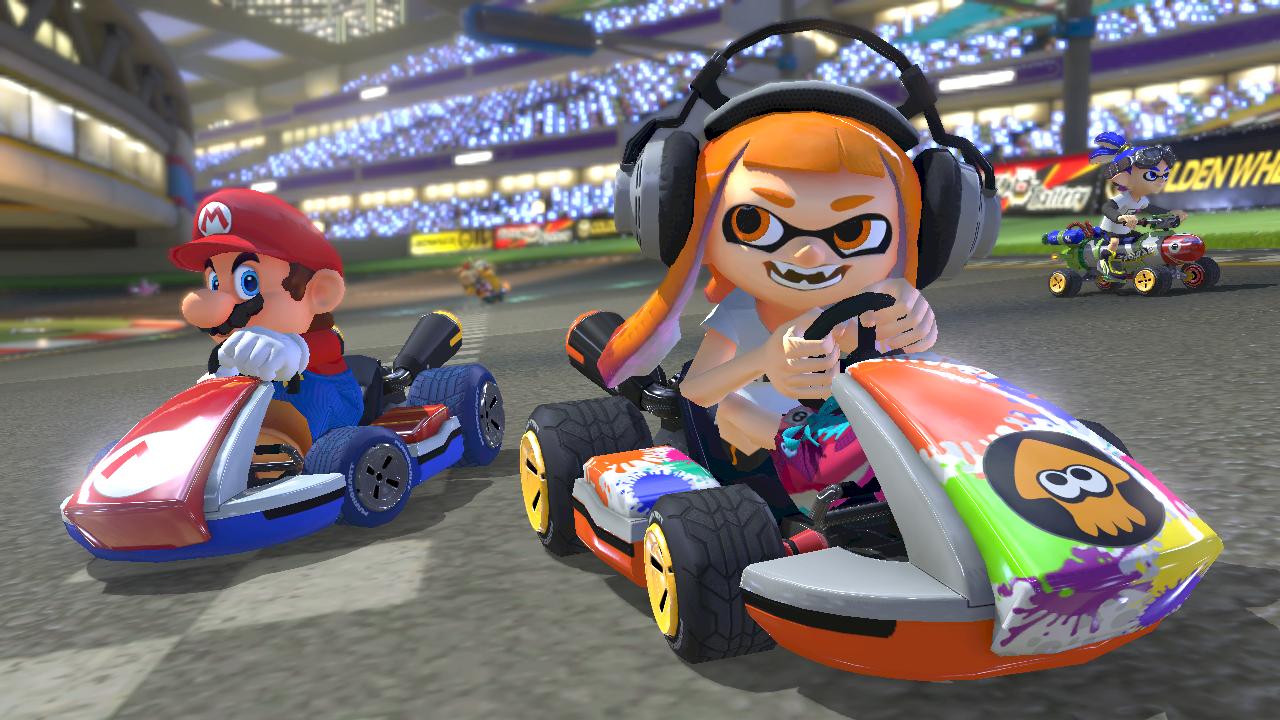
The wonderfully nerve-wracking Shine Thief is one of five game types here. As with the explosive melee of Bob-omb Blast, it’s better in teams: the maps can seem very small when eleven opponents are all after you, particularly since the Shine slows your kart down noticeably. The classic Balloon Battle is an ever-reliable fallback when you’re in a group and can’t agree on which mode to pick. But it’s newcomer Renegade Roundup that steals the show. Here, a team of law enforcers are given cherry lights and Piranha Plants to chase down and imprison the titular abscondees. Cells for captured karters hang above giant switches, which the remaining fugitives must run over to free their colleagues. It’s classic cops ‘n’ robbers fun given a Mushroom Kingdom twist, and it’s impossibly moreish.
If you already own the Wii U version and you’re not much of a battler, there’s rather less to tempt you back for a return lap, particularly if you shelled out for the two digital expansions. Outside the Splatoon-themed additions, you can now race in Bowser’s clown car, while three new characters (Dry Bones, Bowser Jr, King Boo) round out the roster. A fourth is only available after earning a dozen gold trophies in 200cc Grand Prix mode – and good luck with that unless you’re both absurdly skilled and extremely patient. Here, a single red shell on the final lap is enough to see three or more opponents speed past. The ability to hold two items at once (unlike Double Dash, you can’t swap between them) should, in theory, help ease this particular pain. But you can never account for a sudden lightning bolt forcing you to drop a crucial defensive item. That said, a new pink corner-turbo for longer drifts gives you the kind of boost that lets you put extra distance between you and the chasing pack. And it’s almost guaranteed that it’ll be used to create brand new shortcuts that will emerge in the weeks and months after launch.
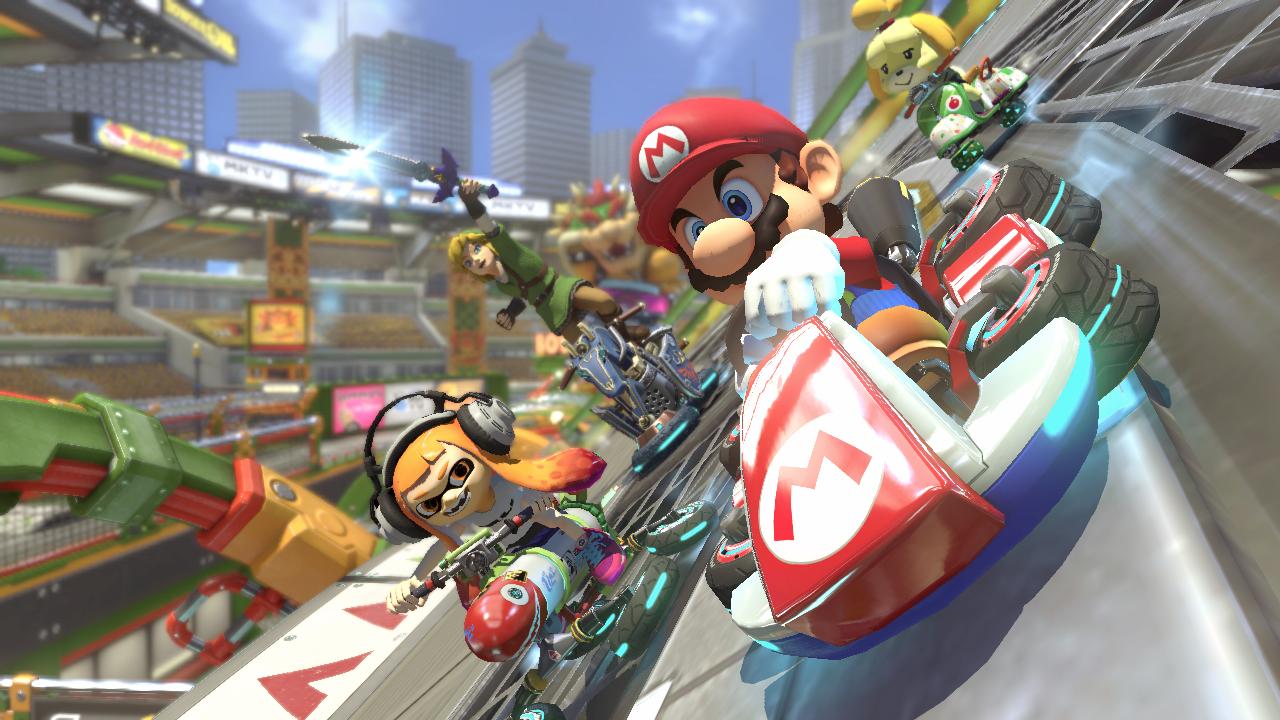
You can enjoy the exhilaration of that extra 50cc away from direct competition, too. Keen time triallers now have the chance to beat their quickest course times with an additional set of leaderboards and ghosts for the higher speed. The 150cc times remain, but once you’ve acclimatised to using the brake for perhaps the first time in a Mario Kart game since the 1992 original, you might find it hard to go back.
Evidently, Nintendo hasn’t had the same trouble, returning to past games and cherry-picking most of the best bits to further augment what was already a pretty pimped-out ride. A name like Deluxe suggests superiority and Nintendo has duly delivered with the definitive version of the most complete Mario Kart to date. It leaves you with just one question: where does the series go from here?
More info
| Genre | Racing |
| Description | The biggest kart racer makes its way to the Wii U |
| Platform | "Wii U" |
| US censor rating | "Everyone" |
| UK censor rating | "" |
| Release date | 1 January 1970 (US), 1 January 1970 (UK) |

Chris is Edge's deputy editor, having previously spent a decade as a freelance critic. With more than 15 years' experience in print and online journalism, he has contributed features, interviews, reviews and more to the likes of PC Gamer, GamesRadar and The Guardian. He is Total Film’s resident game critic, and has a keen interest in cinema. Three (relatively) recent favourites: Hyper Light Drifter, Tetris Effect, Return Of The Obra Dinn.

